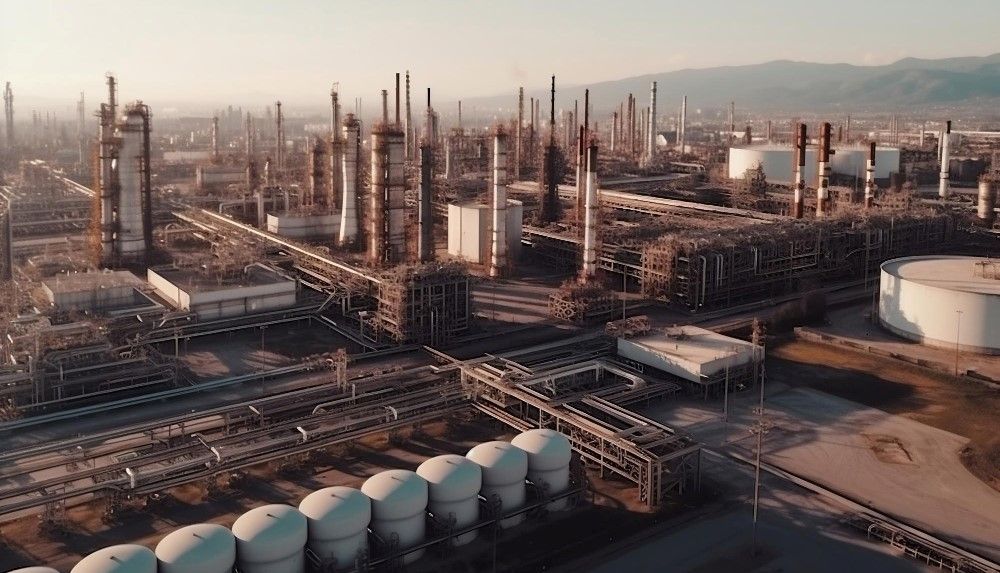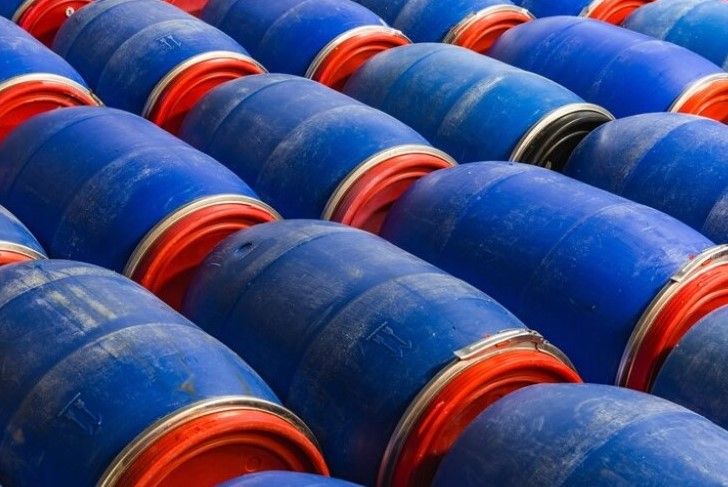Chemical markets are always in flux.
They are at the heart of global economics and their prices are therefore swayed by the constantly changing forces of supply and demand, with a good helping of geopolitics added to the mix.
Yet the essential need for raw materials and chemical products to make almost everything means that the European chemical industry has been able to ride the global economy’s considerable volatility over the past 15 years. Throughout the 2008 banking crash, the global health pandemic, and a supply chain collapse, European chemical companies have remained profitable.
On a global scale, the chemical industry was one of the first to respond when high inflation, increasing interest rates, and record energy prices started to restrain consumer spending as the pandemic subsided. In response, chemical companies reduced operating capacity and lowered inventory levels accordingly, with global production volumes falling steadily (Q1 2023 saw a 5.3% decline).

Yet, besides these macroeconomic forces, Chinese markets are swayed by unique circumstances, such as Covid-related stoppages, a government policy change towards wealth redistribution, an end to the largest government stimulus package on record, weakening export markets, an ageing population, a relatively tiny ‘single-child’ generation who are at family-starting age, a longer-term structural slowdown, and an end to the infrastructure boom.
At the same time as these downward demand pressures, supply is being ramped up. Creating what some analysts are calling a ‘perfect storm’ of over supply and demand disintegration.
This petrochemical price apocalypse is based on data gleaned from Chinese chemical producers which shows the highest level of oversupply in the key six petrochemicals – ethylene, propylene, butadiene, benzene, mixed xylenes (MX) and toluene – for more than thirty years.
As John Richardson, a chemicals analyst at ICIS, reports, “Between 2000 and 2022, global capacity exceeding demand in the six building block petrochemicals averaged 76m tonnes … but still, capacity exceeding demand is forecast to surge to 218m tonnes in 2023 from 191m/tonnes last year. The 2023-2025 average is expected to also be 218m tonnes.”

At the same time, demand for these chemical products is predicted to decline as China’s economy levels out after years of double-digit growth.
For almost a decade, China’s growing demand for petrochemicals has been based on its expanding middle class (a result of a youthful demographic bulge combining with a credit bubble).
As these two factors begin to draw to a close (evident in China’s impending housing market crash), the sudden fall in demand is about to hit, just as capacity is peaking.
The peak in production is largely the result of China’s centralised economic management. While in the West, cost-per-tonne economics help keep supply in check as future projects to expand petrochemical production are put on hold until the economic outlook improves, in China there are many factors to consider outside of economics as to why a project may be approved and funded.

“China accounts for around 45% of global demand for chemicals and petrochemicals despite having a population less than 30% of its size: 1.45 billion vs 5.2 billion,” notes Corinne de Berry is a Senior Copywriter at ICIS. Adding that, “It anticipates achieving 62% market share by 2035.”
For this reason, in 2019, China substantially increased production of the world’s six basic industrial chemicals to take a 38% global share which is still rising. Last year it surpassed U.S. ethylene output to become the world’s biggest producer, making enough to meet domestic needs and have a potential surplus to export.
“China is now also the world’s biggest exporter of polyethylene terephthalate (PET) resins, purified terephthalate acid (PTA), polyvinyl chloride (PVC) and polyester fibres,” report the chemical market analysts at ICIS. “Chinese exports of polypropylene (PP) rose from around half a million tonnes in 2020 to 1.3m tonnes in 2022, while net imports almost halved from 6.1m tonnes to 3.2m tonnes.”
Alongside these changes in quantity, Chinese chemical companies have also upgraded production, using economies of scale to boost output of various fine and specialized chemicals, including additives for plastics.

It is a situation which is putting chemical companies and suppliers in Europe under considerable pressure. With a strong U.S. dollar, a Brexit fallout, raw material disruption from Russia and Ukraine, and a weak overall economic outlook.
Other challenges include:
· high energy and raw material input costs
· record overcapacity
· low margins
· boosted Chinese chemical exports (even in specialist products)
· increased production from lower-cost producers in the Middle East (oil) and U.S. (LNG, shale)
· increased political and consumer pressure to reduce emissions, including carbon taxes
· increased political and consumer pressure to join circular economy, reduce plastic use, recycle feedstocks, reduce energy use
· long-term changes to key other industries (automobile sector moving to electric, increased renewable energy production, etc)
While European consumers are still devoted to buying locally to uphold sustainability obligations, prices may make this impractical, especially given the ease with which higher-grade Chinese chemical derivatives may be purchased. In this sense, maybe the European chemical industry’s business model is broken.
The fact remains, that the European chemical industry has been stagnating for many years. While it is trying to invest its way into growth and adapt to new market conditions, such as increased use of renewable feedstocks and unified legislation in REACH, it still faces questions over short-term competitiveness and longer-term viability.
As de Berry states, “The next decade will prove critical in the evolution of chemical supply chains as suppliers adapt to slower growth, further market consolidation, changing demand, increased competition from China and newer exporters.”
Photo credit: Tohamina on Freepik, Freepik, Tawatochai, Freepik, & Stockgiu